LinkedIn is constantly evolving and improving its features to allow its members to use it as a marketing and advertising tool for their company, and while understanding that the platform has more than one type of ad format is important, so is monitoring the benchmark (LinkedIn ad metrics) assigned to each.
1- LinkedIn Marketing Statistics
– LinkedIn members are more receptive to brand content than users of other platforms: 66% are receptive to company videos, 73% to posts by company representatives and thought leaders, and 48% to banner ads.
– 77% of LinkedIn members would click on an ad on LinkedIn if it was relevant, six percentage points higher than the closest search or social rival.
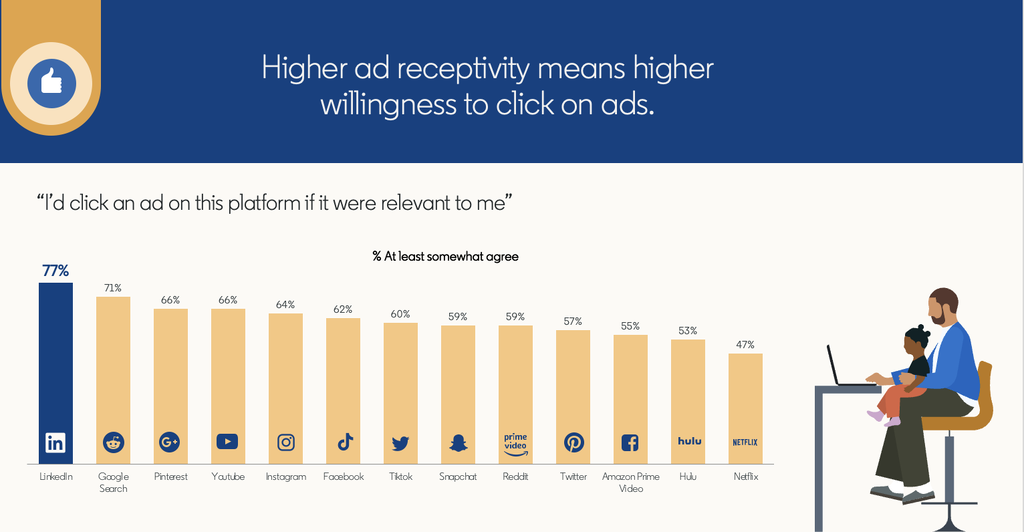
– Up to 91% of LinkedIn members watch videos on their mobile devices. Video posts get 5x as much engagement on LinkedIn as conventional posts, and Live Video posts get 24x more engagement. Video is the fastest growing format on LinkedIn, with uploads up 34% year-over-year.
– More than 1.5M feed updates are viewed per minute.
– The best times to post on LinkedIn to grow your following and boost engagement are generally during weekdays between 9 am and 5 pm.
– 84% of B2B marketers consider LinkedIn the most valuable platform for their social media efforts, with 72% reporting that their LinkedIn usage has increased over the past year.
2 – LinkedIn Ad Benchmarks
Once you’ve nailed your ad type and created your content, you will need to monitor your benchmarks to see how your ads are performing in comparison to rival companies of the same or a similar niche. They are as follows:
– Click-through rate (CTR). This is specifically designed for Sponsored Content ads, and (generally) you are charged per click (although the rate is usually divided by number of impressions). CTR can vary based on countries and regions, the global average is fixed between 0.44% to 0.65%. The benchmark also depends on the type of Sponsored Content: For a single image, the average CTR is 0.56%. For both video content and a carousel, the CTR is lower at 0.44% and 0.40%. Please note: a low CTR means that your ads are not appealing enough for your audience to want to click on.
Expert Tip: When you start a new campaign, try aiming for a good CTR between 0.7 and 1% to lower the CPC. It plays a crucial role in the overall campaign cost. The better your CTR the higher your Quality score may be. Having a higher Campaign Quality Score allows you to improve your Relevancy score which can help lower costs.
– Cost per click (CPC). This refers to the service fee you will pay to the platform for allowing you to advertise on it and is charged per click and will allow you to monitor whether your conversion rate is as expected. Recent data shows that the average CPC for LinkedIn Ads ranges from $8 to $10 in the U.S. and $6 to $7 globally. These costs depend on the audience you’re targeting and your campaign’s quality score. CPC rates have risen compared to past years due to increased competition and more precise targeting.
Expert Tip: To lower your CPC, consider refining your audience targeting. Additionally, improving your ad creative’s click-through rate (CTR) can enhance your quality score, which, in turn, can help reduce your CPC over time.
– Cost per impression (CPM). This metric allows you to see whether your budget spend is justified in regards to how many conversions you’re achieving from your campaign. This is calculated by dividing your total ad spend by the average total impressions (as in, per 1,000 impressions). This is a good benchmark to monitor if your campaign’s purpose is brand awareness. The average CPM for LinkedIn Ads is expected to range between $50 and $100 in the U.S. and $40 to $80 globally.
Expert Tip: To achieve better CPM rates, it’s important to strategically target the right demographic groups and select ad placements that align with your campaign goals. Additionally, experimenting with different ad formats and creative ideas can help optimize CPM by making your ads more appealing to your audience.
– Cost per lead (CPL). This metric looks at how much you are paying per generated lead, so naturally, this is a good benchmark for those running lead gen-focused campaigns. The average cost per lead (CPL) on LinkedIn varies between $20 and $350. Regionally, Latin America has the lowest average CPL at $60, while North America sees the highest, averaging $230.
Expert Tip: Try to promote useful content for your specific audience as a free checklist, cheat sheet or guide. Those are the types of things that do well with Linkedin ads lead gen campaigns
– Engagement rate. Engagement metrics allow you to see whether your ad is reaching your audience and whether they are interacting with it and will allow you to see how many times a viewer engages with your ad – for both paid and free clicks. The engagement rate benchmark for single image ads and carousel ads is 0.5%. Video ads have a higher engagement rate benchmark of 1.6%, as videos generally attract more user attention than standard sponsored content. You can calculate your own engagement rate by dividing the total number of clicks by the total impressions on your ad.
Expert tip: Remember, most people passively consume your content without engaging. The “dwell time” metric allows you to understand how long someone has viewed your ads. It shows you the average number of seconds people spent looking at your ad which can help you measure indirect engagement metrics.
3 -Types of Ads
Those new to the world of LinkedIn ads may be unaware that there is more than one ad type available to members, and that each serves a different purpose for a different desired outcome:
3.1 – Conversation Ads
Conversation ads are marketing within messaging and are designed to allow for a more intimate and personal approach to advertising and often target members in a later stage of the conversion funnel.
Sponsored Messaging is an increasingly popular way for B2B marketers to generate and convert leads, and with them there are two different formats available to the LinkedIn marketer: Message Ads and Conversation Ads. The latter are designed to appear in other (targeted) LinkedIn users’ inboxes and look like direct emails, however, they are not able to reply to them and directly communicate, meaning if something piques their interest, they have to hit the CTA. Conversation Ads will have numerous CTAs (call-to-action) for the lead to engage with. With Message Ads. The layout is similar, but there are no CTA buttons.
Conversation Ads and Message Ads Specs
– Banner Image (optional): jpg or png files, smaller than 2MB
– Image ratios: 300×250 pixels
– Ad name 9optional): 50 characters
– Message subject: 60 characters
– Message text: 2,500 characters
– Custom Footer: 2,500 characters
– Call-to-action (customer text only): 20 character limit
– Landing Page URL: uses the http:// or https:// prefix

3.2 – Sponsored Content
These are the organic-looking content that appears on your (and your audience’s) news feeds. It could be in the form of a video (Video Ads), a text with a single image or logo (Single Image Ads), content regarding an upcoming event (Event Ads), or a text with multiple images (Carousel Ads).
These ads are popular among marketers because of their organic placement within feeds that doesn’t look out of place or spammy because they are designed to aid user experience as well as market a product or brand.
For those thinking about planning a top of funnel advertising campaign on LinkedIn, Sponsored Content is a great way to go about it. It is also a good starting point for those new to the platform and looking to utilise it as a marketing tool.
Single Image Ad Specs
– File Type: Image must be jpg or png, and less than 5 MB in size.
– Image Ratios: 1.91:1 (horizontal), 1:1 (square), and 1:1.91 (vertical)
– Ad name: (optional): 255 characters
– Headline: 70 characters
– Introductory text: 150 characters recommended (for mobile optimization; but can be longer for desktop)
– Description: 70 characters (only required if you have the ad running on LinkedIn Audience Network)
– Landing page URL: uses the http:// or https:// prefix.
– CTA Buttons: Apply (for hiring ads), Download (for distributing white papers or other documents of interest to the audience), View Quote, Learn More, Sign Up, Subscribe (for newsletters), Register (for events), Join, Attend or Request Demo.
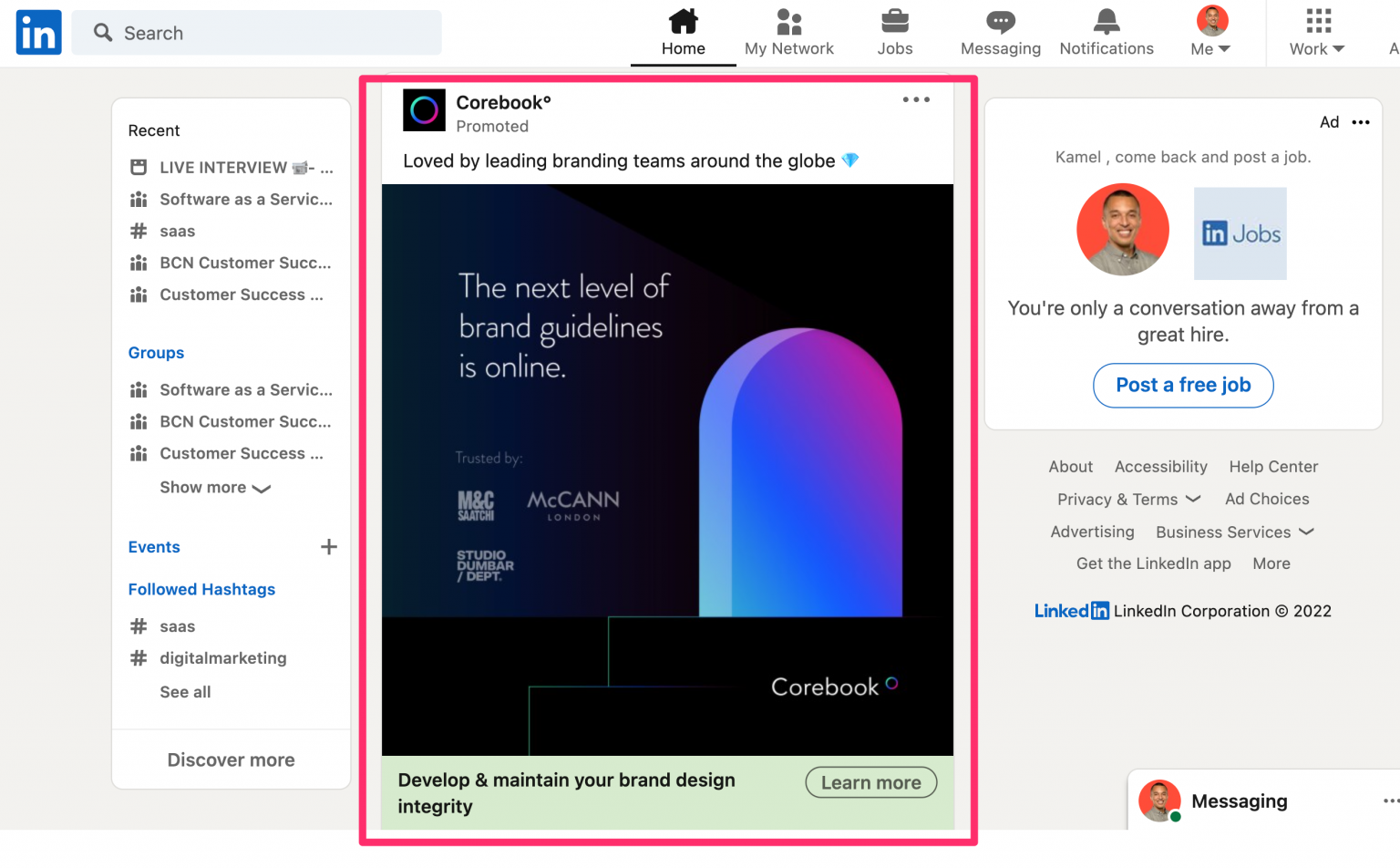
Video Ad Specs
– File Type: MP4 file format with an AAC or MPEG4 audio format. Videos must be at least 3 seconds long and no longer than 30 minutes.
– Video Ratios: 16:9 (horizontal), 1:1 (square), and 9:16 (vertical)
– Video File Size: More than 75 kb but no more than 200 mb
– Ad name (optional): 255 characters
– Headline: 70 characters
– Introductory text: 150 characters recommended (for mobile optimization; but can be longer for desktop)
– CTA buttons: Apply, Download, View Quote, Learn More, Sign Up, Subscribe, Register, Join, Attend, and Request Demo.
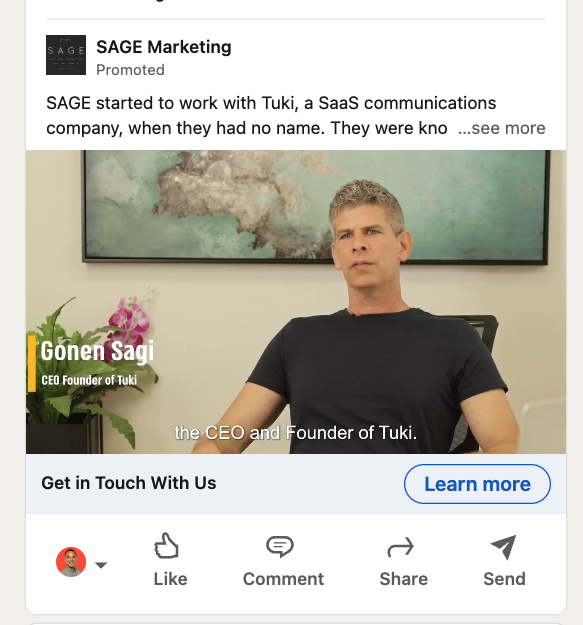
Carousel Ad Specs
– File Type: Image must be jpg or png. (Video is not currently supported by Carousel Ads)
– Image ratios: 1:1 (square)
– Ad name (optional): 255 characters
– Card Headline: 45 characters
– Introductory text: 255 characters
– Landing Page URL: uses the http:// or https:// prefix
– CTA buttons: Apply, Download, View Quote, Learn More, Sign Up, Subscribe, Register, Join, Attend and Request Demo.

Event Ad Specs
– File Type: Image will be pulled from the organic event’s page
– Image Ratio: 4:1 (will be pulled from the organic event’s page)
– Ad Name (optional): 255 characters)
– Introductory Text: 150 characters recommended for mobile device optimization (but can be up to 600 characters)
– Event URL: Required and must be the URL to a LinkedIn Event page
– CTA button: View Event

3.3 – Lead Gen Forms
Naturally, lead gen forms are designed to help a brand collect more direct leads via LinkedIn by collecting their profile data automatically (saving them the hassle of having to manually input it, which can be off-putting to the busy LinkedIn member). These are best used for audiences at the ‘ready to convert’ stage of the funnel. Our LinkedIn ads agency recommend using of this format if your first goal is to generated leads. There are multiple form fields you can include. However, you’re advised to stick with only a few so that the process is short, simple and not overwhelming or off-putting.
Case Study: How We Helped a Security Analytics Software Company Generate 42% More SQLs Using LinkedIn Ads
Lead Gen Forms Specs
– File Type: There are no images or videos used in lead gen forms
– Form name: 256 characters
– Offer headline: 60 characters
– Offer detail: 160 characters (optional)
– Privacy policy: 2,000 characters
– Call-to-action: 20 characters
– Confirmation message: 300 characters
– Landing page URL: uses the http:// or https:// prefix.
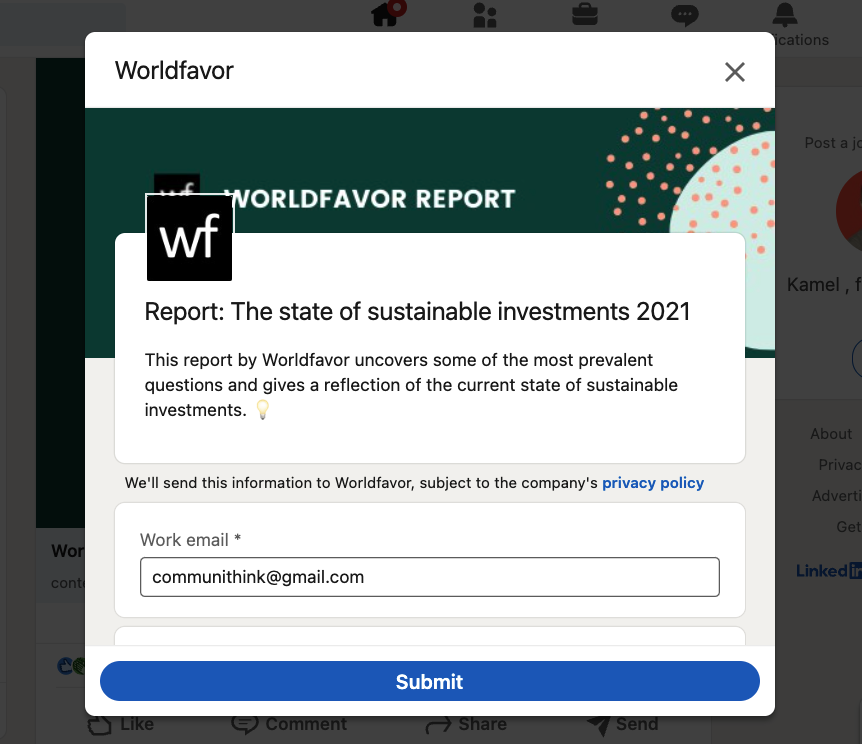
3.4 – Text & Dynamic Ads
These are LinkedIn’s native version of PPC (pay-per-click) ads. Text Ads are simple and don’t allow much room for creativity. However, Dynamic Ads (sometimes known as Spotlight Ads) allow you to personalise the content to better-target members of your audience. These ad types, as well as Follower Ads, are ideal for non-conversion-based advertising, i.e.: if building your page’s follower number on LinkedIn is a goal. Please note: these ads are not recommended for bottom-funnel advertising.
Text Ads Specs
– File Type: Image must be a jpg or png, and less than 2MB in size.
– Image ratios: no longer than 100 x100 pixels
– Headline: 25 characters
– Description: 75 characters
– Landing page URL: uses the http:// or https:// prefix
– CTA buttons: Apply, Download, View Quote, Learn More, Sign Up, Subscribe, Register, Join, Attend, and Request Demo
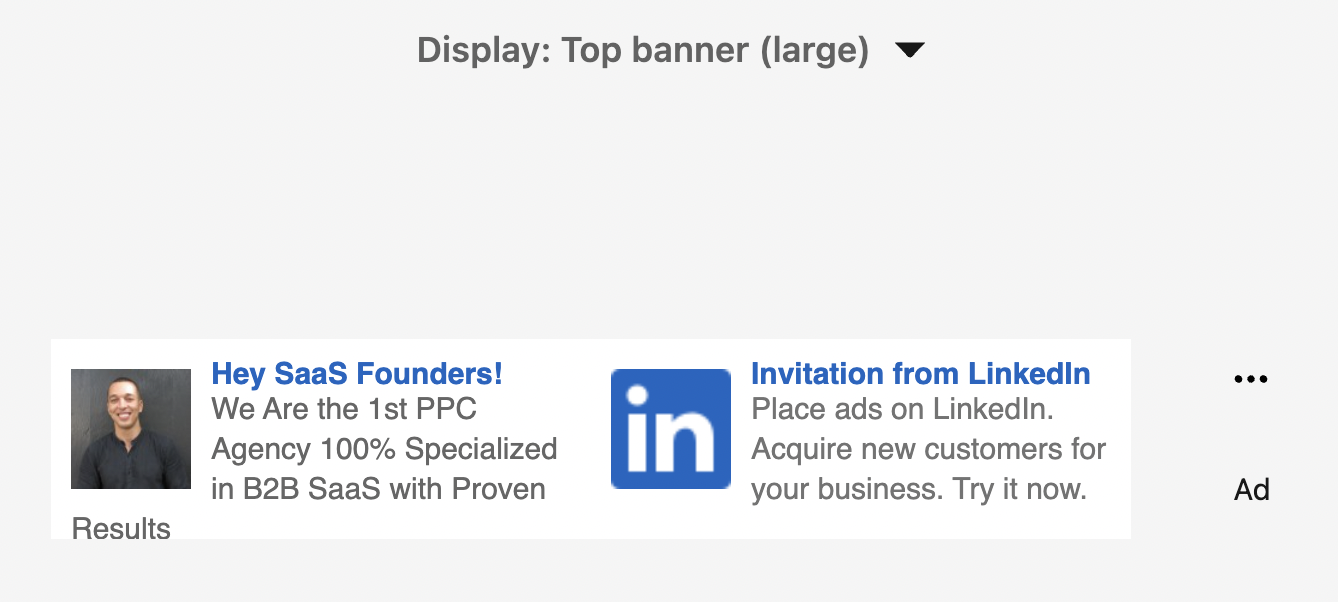
Spotlight Ads Specs
– Logo: Image must be a jpg or png, and less than 2MB in size.
– Image ratios: no larger than 100 x 100 pixels
– Background Image (optional): Image must be jpg or png, and less than 2 MB in size.
– Image ratios: no longer than 300 x 250 pixels
– Headline: 50 characters
– Description: 70 characters
– Company name: 25 characters
– Call to action: 18 characters
– Landing page URL: uses the http:// or https:// prefix
– CTA buttons: Apply, Download, View Quote, Learn More, Sign Up, Subscribe, Register, Join, Attend, and Request Demo
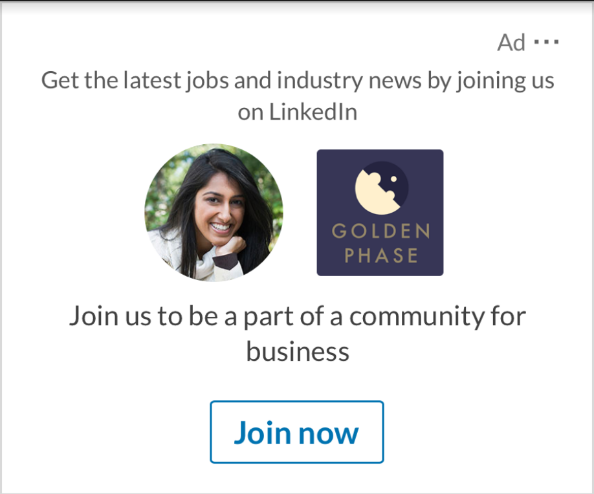
Follower Ads Specs
– Logo: Image must be a jpg or png, and less than 2 MB in size
– Image ratios: no larger than 100 x 100 pixels
– Headline: 50 characters
– Description: 70 characters
– Company name: 25 characters
– CTA buttons: Visit careers, visit company, visit jobs
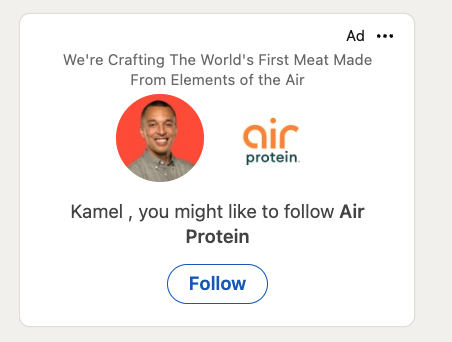
Conclusion
Understanding the types of LinkedIn ads is only half of the battle. It is important to also understand the fundamentals of each ad type and why keeping an eye on its benchmarks will help you improve your LinkedIn advertising game and bump up the numbers of your ROI.
If you’d like to learn more about how we help B2B SaaS and Tech companies grow their MRR through LinkedIn advertising, contact us online or send us an email today at info@getuplead.com to speak with someone on our team.
You might also be interested:


